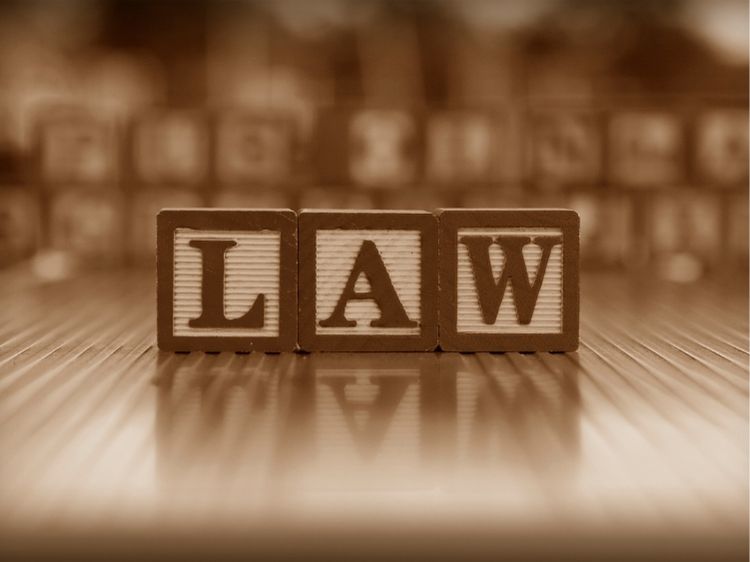Why Understanding Liability and Negligence Matters
Ever wondered what separates liability from negligence? You’ve likely heard both terms in discussions about accidents, lawsuits, and even insurance claims. However, these concepts are more than just legal jargon—they have real-life consequences that affect how justice is served in courts and the level of responsibility individuals or companies bear.
In this article, we’ll explore the nitty-gritty of liability and negligence, explaining the core differences between the two and their importance in both legal and everyday scenarios. Whether you’re an individual trying to understand your legal rights or a business owner protecting yourself from potential lawsuits, this guide will break down these critical terms for you.
What is Liability?
Liability refers to the state of being responsible for something, particularly in legal matters. If you’re liable, it means you’re accountable—financially, morally, or legally—for harm caused to another party. Liability can arise from various situations, such as breach of contract, property damage, or even accidents on your premises.
There are different types of liability, including:
- Strict Liability: Where one is responsible for damages regardless of fault. This often applies in cases involving dangerous activities or defective products.
- Vicarious Liability: This occurs when one party is held responsible for the actions of another. Employers, for instance, may be held liable for the actions of their employees.
- Professional Liability: Professionals such as doctors or lawyers may face liability when their services cause harm due to errors or negligence in their duties.
In short, liability assigns blame or accountability for an action or inaction that causes harm or damage. The key takeaway? If you are liable, you are responsible, and this responsibility often comes with financial or legal consequences.
What is Negligence?
Negligence, on the other hand, refers to the failure to exercise the care that a reasonably prudent person would exercise in similar circumstances. It’s essentially carelessness that results in harm to another person. Negligence is a form of liability but requires the establishment of certain key elements to prove it in a court of law.
To establish negligence, four key components must be proven:
- Duty of Care: The defendant owed the plaintiff a duty of care.
- Breach of Duty: The defendant breached that duty.
- Causation: The breach directly caused harm or injury.
- Damages: The plaintiff suffered measurable harm as a result.
Unlike strict liability, negligence requires a more detailed examination of the circumstances and whether the party failed to act reasonably. If someone slips on an unmarked wet floor in a store, for instance, the store could be considered negligent if it didn’t provide warning signs for customers.
Key Differences Between Liability and Negligence
Now that we’ve unpacked both terms, let’s dive into the crucial distinctions between liability and negligence.
- Nature of Responsibility: Liability can exist even without negligence. For example, strict liability holds parties accountable regardless of fault. Negligence, on the other hand, specifically requires a breach of duty and harm caused by that breach.
- Proof: To prove negligence, specific elements must be demonstrated, whereas liability can sometimes be imposed without proving fault, such as in cases of strict or product liability.
- Outcome: Both liability and negligence can result in legal and financial consequences, but the burden of proof is usually more substantial in negligence cases. For liability, the responsibility may be automatic, depending on the circumstances.
Types of Negligence
Not all negligence is created equal! Here are the most common types of negligence you may come across in legal settings:
- Comparative Negligence: In cases involving multiple parties, the blame is divided based on the degree of fault. For example, if you’re 20% at fault in a car accident, your compensation might be reduced by 20%.
- Contributory Negligence: This is a harsher form of negligence where even if the plaintiff is slightly at fault, they may be barred from recovering any damages.
- Gross Negligence: This refers to a severe lack of care, bordering on reckless disregard for the safety or well-being of others.
- Medical Negligence: When a healthcare provider causes harm by failing to meet the appropriate standard of care, it falls under medical negligence.
Each type of negligence comes with its own legal standards and implications. Knowing which one applies to a particular case can significantly affect the outcome.
Legal Implications of Liability and Negligence
In the legal world, understanding the distinction between liability and negligence can have serious implications, especially in cases of personal injury, property damage, and business operations. Here’s a closer look at how each plays out in real-life scenarios:
Personal Injury Cases
In personal injury lawsuits, proving negligence is crucial for the injured party to receive compensation. For example, if a pedestrian is hit by a car, they must demonstrate that the driver was negligent—whether by speeding, texting while driving, or disregarding traffic signals.
On the other hand, liability might not always require proving negligence. For instance, in product liability cases, manufacturers can be held responsible for damages caused by defective products even if they took all necessary precautions during production.
Business Operations
Businesses can face liability for a wide range of issues, from customer accidents on their premises to defective products that cause harm. A company’s liability can stem from negligence or from strict liability if they’re engaged in hazardous activities or fail to ensure the safety of their customers.
Having a robust understanding of liability and negligence can help businesses implement better safety measures, establish clear guidelines for employee conduct, and minimize the risk of lawsuits.
How to Protect Yourself from Liability and Negligence Claims
Whether you’re an individual or a business owner, protecting yourself from liability and negligence claims should be a priority. Here are some practical steps you can take:
- Purchase Insurance: Liability insurance is your first line of defense. It covers damages and legal fees in the event of a lawsuit. Consider general liability insurance, professional liability insurance, or product liability insurance, depending on your needs.
- Implement Safety Measures: If you own a business, regularly inspect your premises for hazards and ensure your employees are trained to prevent accidents.
- Create Contracts: Well-drafted contracts can limit your liability and clarify the responsibilities of all parties involved. Always include indemnity clauses when possible.
- Maintain Records: Keep thorough records of any safety measures, training, or inspections. These documents can serve as evidence in court, demonstrating that you took reasonable steps to prevent harm.
FAQs About Liability and Negligence
- What’s the difference between strict liability and negligence? Strict liability doesn’t require proof of fault, while negligence requires proving a breach of duty that caused harm.
- Can I be sued for negligence if no one was harmed? No. To win a negligence claim, the plaintiff must show that they suffered damages as a direct result of your actions or inaction.
- What types of businesses need liability insurance? Almost every business can benefit from liability insurance, but it’s especially important for industries like healthcare, construction, and retail, where the risk of accidents or mistakes is higher.
- How can I prove negligence in court? To prove negligence, you need to show that the defendant owed you a duty of care, breached that duty, and caused harm as a result.
- What’s the difference between comparative and contributory negligence? Comparative negligence allows the plaintiff to recover damages based on their degree of fault, while contributory negligence may prevent recovery entirely if the plaintiff shares any blame.
Conclusion: Why Liability and Negligence Matter
Understanding the differences between liability and negligence is crucial, not just for legal professionals but for everyday people and business owners. Liability assigns responsibility, while negligence digs deeper into the carelessness or breach of duty that caused harm. By grasping these concepts, you’re better prepared to protect yourself legally and make informed decisions when it comes to insurance and risk management.
Whether you’re navigating a personal injury case or protecting your business from lawsuits, the concepts of liability and negligence should be at the forefront of your mind. They shape how the law assigns blame and ensures that justice is served in both civil and business matters.
Authoritative Links:
- https://www.law.cornell.edu/wex/liability
- https://www.nolo.com/legal-encyclopedia/negligence-what-it-how-prove-it.html
- https://www.findlaw.com/injury/accident-injury-law/liability-and-negligence-in-personal-injury-cases.html







